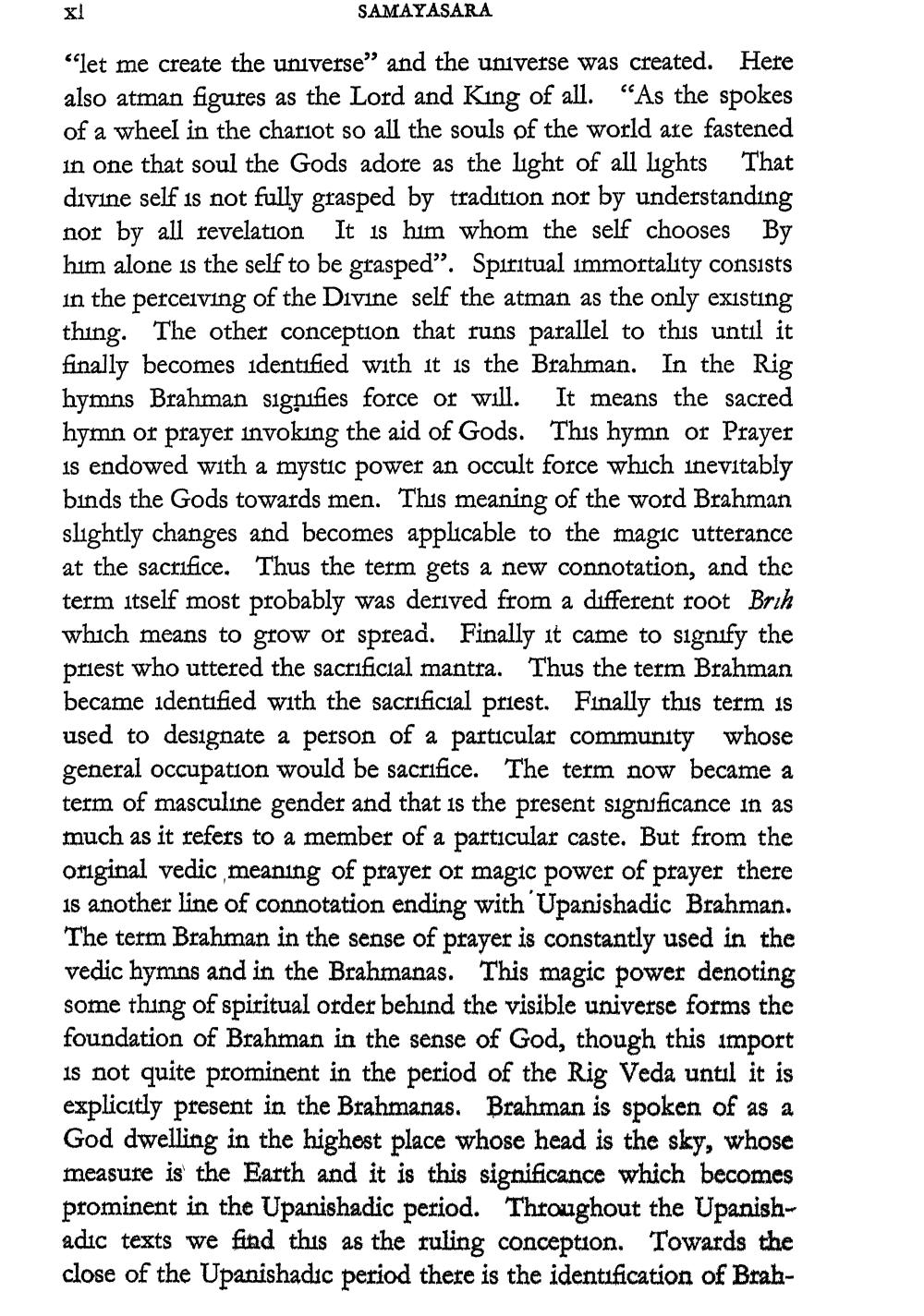________________
SAMAYASARA
"let me create the universe” and the universe was created. Here also atman figures as the Lord and King of all. “As the spokes of a wheel in the chariot so all the souls of the world are fastened in one that soul the Gods adore as the light of all lights That divine self is not fully grasped by tradition nor by understanding nor by all revelation It is him whom the self chooses By him alone is the self to be grasped”. Spiritual immortality consists in the perceiving of the Divine self the atman as the only existing thing. The other conception that runs parallel to this until it finally becomes identified with it is the Brahman. In the Rig hymns Brahman signifies force or will. It means the sacred hymn or prayer invoking the aid of Gods. This hymn or Prayer is endowed with a mystic power an occult force which inevitably binds the Gods towards men. This meaning of the word Brahman slightly changes and becomes applicable to the magic utterance at the sacrifice. Thus the term gets a new connotation, and the term itself most probably was derived from a different root Brih which means to grow or spread. Finally it came to signify the priest who uttered the sacrificial mantra. Thus the term Brahman became identified with the sacrificial priest. Finally this term is used to designate a person of a particular community whose general occupation would be sacrifice. The term now became a term of masculine gender and that is the present significance in as much as it refers to a member of a particular caste. But from the original vedic meaning of prayer or magic power of prayer there is another line of connotation ending with 'Upanishadic Brahman. The term Brahman in the sense of prayer is constantly used in the vedic hymns and in the Brahmanas. This magic power denoting some thing of spiritual order behind the visible universe forms the foundation of Brahman in the sense of God, though this import is not quite prominent in the period of the Rig Veda until it is explicitly present in the Brahmanas. Brahman is spoken of as a God dwelling in the highest place whose head is the sky, whose measure is the Earth and it is this significance which becomes prominent in the Upanishadic period. Throughout the Upanishadıc texts we find this as the ruling conception. Towards the close of the Upanishadic period there is the identification of Brah




